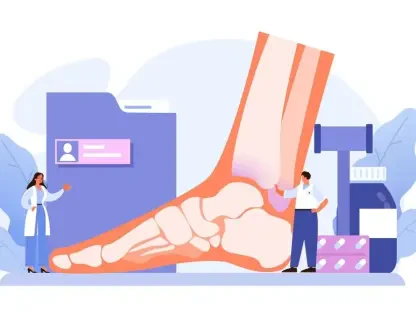What’s happening beneath the surface in Southern states that could ignite a public health crisis? This question raises concerns amid national advancements in HIV treatment and prevention. Alarming trends indicate that the HIV epidemic in the Southern United States threatens to spiral out of control, potentially igniting a public health crisis.
Historical Reliance and Socio-Economic Fragility
Southern states have historically leaned heavily on federal support to combat HIV, given their unique socio-economic vulnerabilities. These vulnerabilities include higher poverty rates, limited healthcare access, and pervasive healthcare disparities, making these states particularly susceptible to HIV outbreaks. Maintaining robust healthcare infrastructures is crucial for managing the HIV epidemic effectively in these regions. Federal aid has played a pivotal role in sustaining these efforts, enabling these states to implement and expand vital interventions over the years.
Impact of Funding Cuts on Local Initiatives
Recent funding cuts during the Trump administration profoundly impacted HIV prevention programs in the Southern U.S. The budget reductions significantly affected local health organizations, universities, and community-based groups that provide critical services such as testing, mobile clinics, and educational initiatives. For example, groups like Hearts for the Homeless and My Brother’s Keeper, which relied heavily on federal grants, encountered extensive resource losses. These financial setbacks have prompted operational challenges, limiting their ability to offer essential services to those most in need.
Insights from Community Members and Experts
Local health officials and community members have voiced concerns about the instability brought on by these funding cuts. According to Dr. Linda Peters, a health administrator in Alabama, “The withdrawal of federal support has plunged our initiatives into chaos. Without sustained funding, our progress is jeopardized.” Community organizations are left grappling with reduced resources, which threatens to widen existing health disparities, particularly in marginalized communities. Stories from those directly impacted underscore the arduous journey to secure necessary resources and maintain essential services amidst funding uncertainties.
Navigating a Path Forward: Strategies and Solutions
In response to these challenges, communities and organizations are exploring innovative strategies to counteract the diminished federal support. Collaborative frameworks are emerging, emphasizing alternative funding streams and partnerships with private foundations and pharmaceutical companies. Some organizations have successfully adopted creative approaches to overcome similar challenges in the past. By leveraging technology and fostering community engagement, local groups strive to maintain HIV prevention and outreach efforts despite financial constraints.
A Call for Change
As the Southern U.S. grapples with the effects of funding cuts and rising HIV infections, there is an urgent need for renewed focus on sustainable solutions and long-term public health strategies. Addressing the gaps left by federal cuts requires prioritizing policy reform and establishing stable funding mechanisms. The call to action resonates with policymakers, health organizations, and communities, recognizing that maintaining momentum in the fight against HIV demands comprehensive support and innovative collaboration to prevent potential public health crises.









